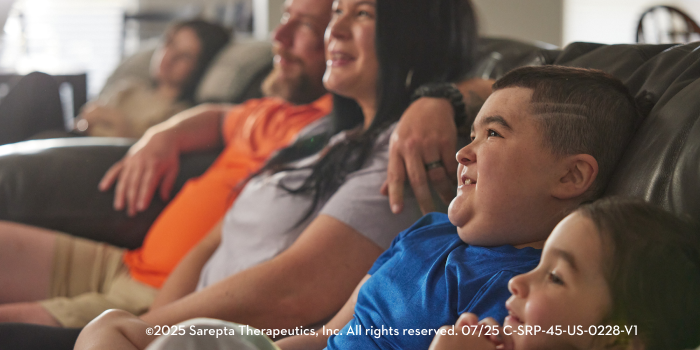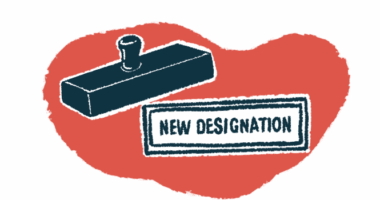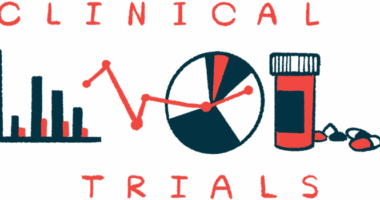An Upbeat Outlook Guides This Duchenne Family
This is a sponsored post written by Brandi in collaboration with Sarepta Therapeutics.

This content is sponsored by Sarepta Therapeutics and is intended for US audiences only. Any other present or future content posted by the contributor, not expressly designated as “Sarepta Therapeutics-sponsored content” is not associated with Sarepta. Brandi’s son Beck is an actual patient who is taking AMONDYS 45 (casimersen).
The information provided here is general in nature and is not intended to be a substitute for professional medical advice, diagnosis, or treatment. You are strongly encouraged to seek the advice of your doctor or other qualified healthcare provider with any questions regarding a medical condition.
This content discusses Beck’s experience with AMONDYS 45; individual results may vary. Please see Important Safety Information below, full Prescribing Information, and Patient Information on AMONDYS45.com.
Beck is Living a Busy Life with Duchenne While Receiving AMONDYS 45
My 14-year-old son, Beck, is incredible. He’s really easy to talk to and such a positive, helpful person. When someone in our family is having a hard day, he’s the go-to person who’s always there to help solve problems or distract us from what’s bothering us.
We have a family meeting every night in Beck’s room, and before we say goodnight to him, each person names three good things that happened that day. We do this so that while we’re falling asleep, we’re focusing on positive things, rather than negative things. And if we forget to do that, Beck tells us, “Wait! We need to name our positive things.”
Sometimes when I leave Beck’s room after sharing our positive things, I’m crying because he has every reason to be mad at the world, yet he wants to hear our happy stories and share his own. He’ll tell us things like, “I was very brave going into a new classroom in my wheelchair.” Beck was diagnosed with Duchenne when he was 5 years old, and despite the shock we felt when he received his diagnosis, our family has experienced so much positivity since then.
Learning About Treatment Options
When Beck’s neurologist diagnosed Beck in 2016, he told us that although there were no treatments approved for Duchenne at the time, some potential treatments were being studied. Little did we know that Beck would play an important role in the study of one of those treatments. I started keeping an eye on clinicaltrials.gov and would search for Duchenne studies almost every day. Whenever I saw one that I thought might be relevant, I would call Beck’s neurologist and ask about it. I wouldn’t even wait until Beck’s next appointment. The neurologist was so helpful.
One day I came across a trial for patients who are amenable to exon 45 skipping. I followed up, and a few months later, when Beck was 7, he received his first infusion of casimersen, which is now known as AMONDYS 45.
I’ll be completely honest. When I first started to learn about Duchenne, the scientific part was a little over my head. I learned that dystrophin is a protein that muscles need to work correctly, and if there are mutations in the dystrophin gene, the body can’t make the dystrophin it needs.
Beck had a confirmed mutation that impacts exon 45. As our neurologist explained, it’s like certain puzzle pieces in Beck’s dystrophin gene are missing, which means Beck’s body can’t produce the dystrophin he needs. The aim of exon-skipping treatment is to help Beck’s body produce a shortened form of dystrophin.
Beginning Treatment
When Beck was being screened for the clinical trial, we learned that the medication would be administered via a weekly infusion. Beck did really well with the infusions, which he received in a clinic, and never complained about them. He had intravenous infusions for the first eight weeks or so, and then he had a port implanted—not because he had trouble with the IVs, but it was just easier for him to have a port.
He participated in the trial until casimersen received accelerated FDA approval in 2021. He stayed on AMONDYS 45 after it was approved and continues his weekly infusions to this day. Now, Beck receives his infusions at home, usually on Tuesdays. We plan the dates with the infusion nurse about a month in advance. We have all the supplies out and ready beforehand, and when the nurse arrives, she prepares the medication, accesses Beck’s port, and does the infusion. The infusion itself takes only about 35 to 60 minutes.
Setting Treatment Goals
AMONDYS 45 is not a cure for Duchenne, and it won’t stop the progression of the disease. However, it is meaningful to me that AMONDYS 45 aims to treat the root cause of Duchenne symptoms, which is low levels of dystrophin protein. I want Beck’s body to be able to produce more dystrophin because it is an essential protein for muscles.
Beck has so many things he loves to do. My goal for Beck is for him to be able to maintain as much independence as possible. He is absolutely obsessed with airplanes—in fact, he taught himself to fly using flight simulation software, and he wants to become a pilot. He also loves playing power soccer, which is a competitive team sport developed specifically for power wheelchair users. He adores being outside and has a Polaris racer that we’ve modified so he can drive it in the woods or even up and down the street. It makes him really happy to have something fast and loud to drive.
And of course, Beck loves spending time with our family, being there for all of us, giving us advice, and cheering us on with our own interests and dreams.
Advice for Other Families
My advice to other caregivers who are considering AMONDYS 45 is to discuss it with your doctor. Ask all your questions and learn as much as you can about it. Ultimately, though, your doctor can’t make a treatment decision for you. You are the decision maker for your child.
I also invite you to view the two videos highlighted here. They share some of Beck’s experiences living with Duchenne and receiving treatment with AMONDYS 45. It can be so helpful to hear stories from other Duchenne families.
Our family’s life changed overnight when Beck received a Duchenne diagnosis. But we’ve learned that even with Duchenne, we can still live a beautiful, meaningful life. We want to appreciate every moment we have together, and I hope our story will inspire you to feel that way too.
AMONDYS 45 (casimersen)
Indication and Important Safety Information
WHAT IS AMONDYS 45 (casimersen)?
AMONDYS 45 is used to treat patients with Duchenne muscular dystrophy (DMD) who have a confirmed mutation of the dystrophin gene that can be treated by skipping exon 45.
This indication is approved under accelerated approval based on an increase in dystrophin production in skeletal muscle observed in patients treated with AMONDYS 45. Continued approval for this indication may be contingent upon verification of a clinical benefit in confirmatory trials.
IMPORTANT SAFETY INFORMATION
Contraindications: Do not receive AMONDYS 45 if you are allergic to casimersen or any of the ingredients in AMONDYS 45. Serious allergic reactions to casimersen have included anaphylaxis, which may include difficulty breathing, tightness in the chest, and angioedema which may include swelling of the mouth, face, lips, or tongue.
Hypersensitivity Reactions: Serious allergic reactions, including angioedema and anaphylaxis, have occurred in patients who were treated with AMONDYS 45. Patients should seek immediate medical care should they experience signs and symptoms of allergic reactions. Your doctor will institute appropriate medical treatment which may include slowing, interrupting, or discontinuing the AMONDYS 45 infusion. Your doctor will monitor you until the condition resolves.
Kidney Toxicity and Monitoring: Damage to the kidneys was seen in animals who received casimersen. Although damage to the kidneys was not seen in clinical studies with AMONDYS 45, potentially fatal kidney damage has occurred with other drugs that work in a similar way. Your doctor may recommend urine and blood testing before starting treatment followed by urine testing every month and a blood test every 3 months to monitor your kidneys.
Adverse Reactions: Side effects occurring in at least 20% of patients treated with AMONDYS 45 and at least 5% more frequently than in patients who received an inactive intravenous (IV) infusion were (AMONDYS 45, placebo): upper respiratory tract infection (65%, 55%), cough (33%, 26%), fever (33%, 23%), headache (32%, 19%), joint pain (21%, 10%), and pain in mouth and throat (21%, 7%).
Other side effects that occurred in at least 10% of patients treated with AMONDYS 45 and at least 5% more frequently than patients who received an inactive IV infusion were: ear pain, nausea, ear infection, pain after injury, and dizziness and light-headedness.
What do I do if I have side effects?
Ask your healthcare provider for advice about any side effects that concern you.
You are encouraged to report negative side effects of prescription drugs to the FDA. Visit www.fda.gov/medwatch or call 1-800-FDA-1088. You may also report side effects to Sarepta Therapeutics at 1-888-SAREPTA (1-888-727-3782).
The information provided here does not include all that is known about AMONDYS 45. To learn more, talk with your healthcare provider.
Before receiving this infusion, please see the full Prescribing Information for AMONDYS 45 (casimersen).
To learn more about AMONDYS 45, reach out to your child’s care team or visit AMONDYS45.com.






